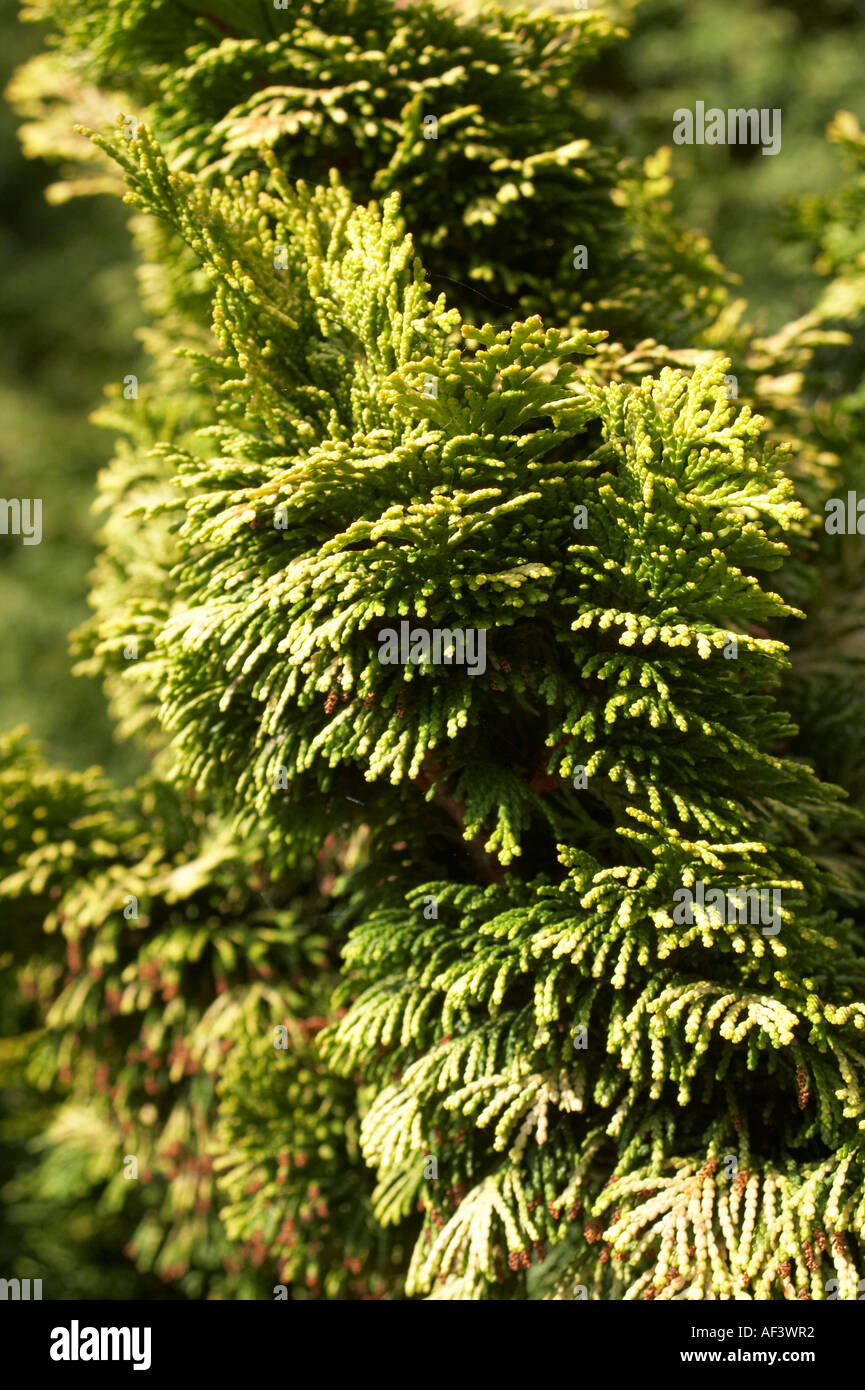Cupressaceae. Thuja occidentalis. Reingold

Image details
Contributor:
Piotr & Irena Kolasa / Alamy Stock PhotoImage ID:
AF3WR2File size:
52.6 MB (2.3 MB Compressed download)Releases:
Model - no | Property - noDo I need a release?Dimensions:
3498 x 5256 px | 29.6 x 44.5 cm | 11.7 x 17.5 inches | 300dpiMore information:
Thuja occidentalis, a species of thuja, is an evergreen coniferous tree in the cypress family Cupressaceae, native to the northeastern U.S. and southeastern Canada, from central Saskatchewan east to New Brunswick, and south to eastern Tennessee in the Appalachian Mountains. Unlike the closely related Thuja plicata (Western Redcedar), it is only a small tree, to 10-20 m tall and 0.4 m trunk diameter (exceptionally to 30 m tall and 1.6 m diameter). The bark is red-brown, furrowed and peels in narrow, longitudinal strips. The foliage forms in flat sprays with scale-like leaves 3-5 mm long. The cones are slender, yellow-green ripening brown, 10-15 mm long and 4-5 mm broad, with 6-8 overlapping scales. It is known as Eastern Arborvitae, American Arborvitae, or just Arborvitae, the latter particularly in the horticultural trade. Other names by which it is known include Northern Whitecedar, Eastern Whitecedar (sometimes split into two words as "White Cedar", though this causes confusion, as it is not a cedar), and the colloquial "swamp-cedar". Thuja occidentalis should not be confused with the Chinaberry, Melia azedarach, an Australian deciduous tree also known as the White Cedar. Thuja occidentalis grows naturally in wet forests, being particularly abundant in swamps where other larger and faster-growing trees cannot compete successfully. It also occurs on other sites with reduced tree competition such as cliffs. Although not currently listed as endangered, wild Thuja occidentalis populations are threatened in many areas by the very high deer numbers encouraged by hunting associations; deer find the soft evergreen foliage a very attractive winter food, and strip it rapidly. The largest known is 34 m tall and 175 cm diameter, in Leelanau County, Michigan. It can be a very long-lived tree in certain conditions, with notably old specimens growing on cliffs where they are inaccessible to deer and wildfire; the oldest known living specimen is just over 1, 000 years old, but a d